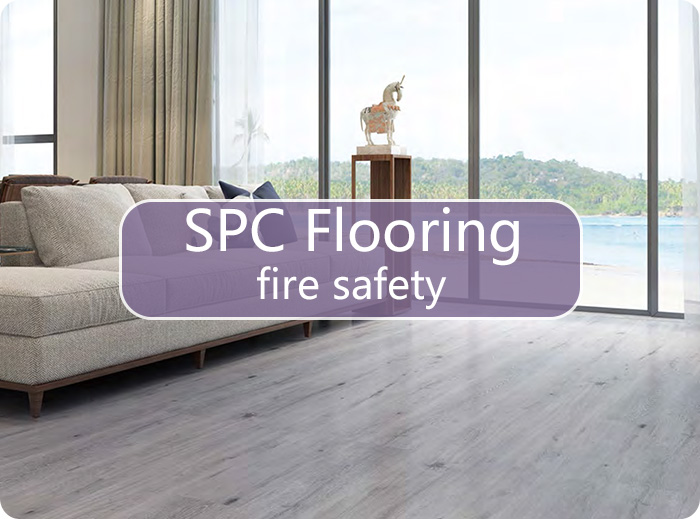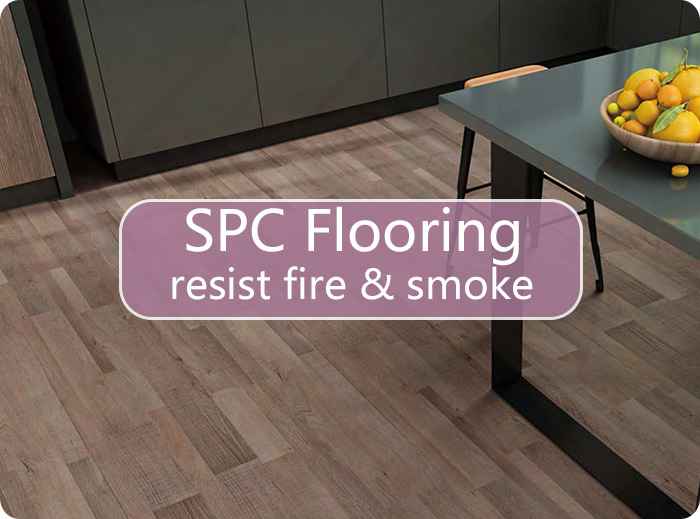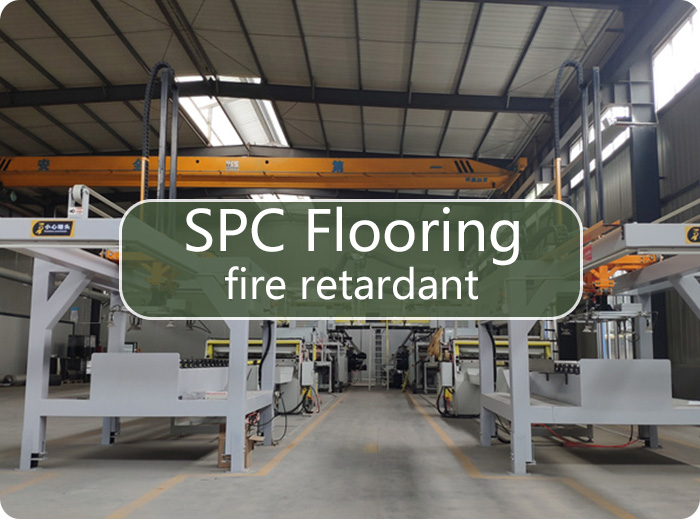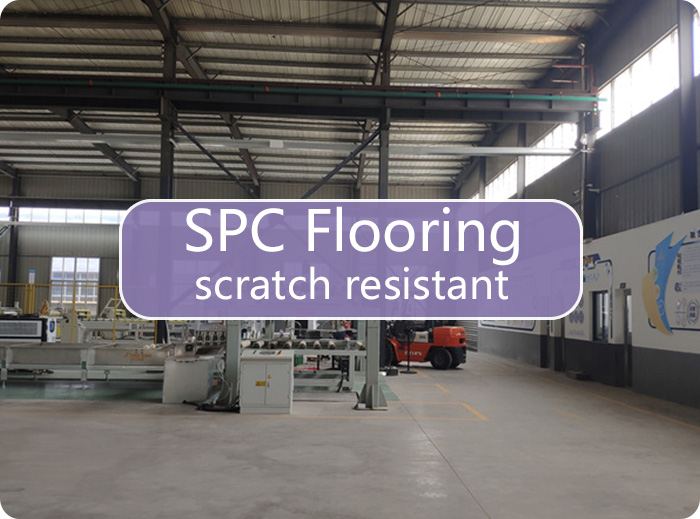SPC Flooring: The Fire-Resistant Revolution in Flooring Solutions
Jan 5, 2026, 15:30 PM
In recent years, Stone Plastic Composite (SPC) flooring has gained significant popularity for its durability, waterproof nature, and aesthetic appeal. But one of the most important, and often underappreciated, advantages of SPC flooring is its fire resistance. As safety becomes a growing concern in building materials, SPC flooring stands out as one of the most fire-retardant choices on the market today. In this blog, we will explore why SPC flooring is fire retardant, the materials and technologies behind this critical feature, and why it matters for homeowners, businesses, and property developers alike.
What Is SPC Flooring? Before diving into the fire-retardant properties of SPC flooring, it’s essential to understand what SPC flooring is.
SPC stands for Stone Plastic Composite. It’s a type of rigid core luxury vinyl flooring that is made from a mixture of limestone (calcium carbonate), polyvinyl chloride (PVC), and stabilizers. This blend creates a durable, water-resistant, and highly stable flooring material that can withstand daily wear and tear.

SPC flooring typically consists of four layers:
- Wear Layer: A transparent, protective topcoat that guards against scratches, stains, and wear.
- Vinyl Layer: Printed vinyl that gives SPC flooring its realistic wood, stone, or tile appearance.
- SPC Core: The rigid core made from limestone and PVC, providing the product with its signature durability and water resistance.
- Backing Layer: An attached underlayment that adds comfort underfoot and soundproofing.
The rigid core of SPC flooring is what sets it apart from other luxury vinyl options, as it provides superior stability and resilience. However, the fire-retardant properties of SPC flooring make it an even more compelling choice for safety-conscious consumers.

Understanding Fire Retardancy in Flooring
Fire retardancy refers to a material's ability to resist ignition, slow the spread of fire, or self-extinguish when exposed to flame. When it comes to flooring, fire-retardant properties are critical in preventing the rapid spread of fire in homes, offices, and public spaces. While no building material is entirely fireproof, fire-retardant materials like SPC flooring are designed to resist burning and significantly delay the time it takes for flames to spread. This can provide valuable extra time for occupants to evacuate in the event of a fire and can also help limit property damage.
Why Is SPC Flooring Fire Retardant?
Several factors contribute to the fire-retardant nature of SPC flooring. Let’s break down the key components and characteristics that make this material a safer choice:

1. The Composition of the SPC Core
The SPC core is primarily made from limestone (calcium carbonate) and PVC. Limestone is a naturally fire-resistant material, as it does not burn or support combustion. When exposed to high heat, limestone does not catch fire but acts as a fire barrier, helping to prevent the spread of flames. PVC, another component of the SPC core, is also inherently fire-resistant. Pure PVC has a relatively high ignition temperature—above 400°C (752°F)—and when it does ignite, it burns slowly. Furthermore, PVC releases hydrogen chloride (HCl) gas when exposed to fire. This gas helps to suppress fire by displacing oxygen in the air, which is necessary for combustion.
2. Fire Retardant Additives
- Aluminum Hydroxide: When exposed to heat, aluminum hydroxide decomposes and releases water vapor, which cools the surrounding area and suppresses flames.
- Magnesium Hydroxide: Similar to aluminum hydroxide, magnesium hydroxide releases water vapor when heated, reducing the material's combustibility.
- Phosphates: Phosphates act as flame suppressants by forming a protective char layer on the material’s surface when exposed to fire, preventing oxygen from reaching the underlying material and slowing the spread of flames.
3. Low Smoke Emission
SPC flooring is designed to produce minimal smoke when exposed to fire. In many fires, the majority of casualties are caused not by direct contact with flames but by the inhalation of toxic smoke. SPC flooring’s chemical composition ensures that it releases fewer toxic gases compared to other materials like carpet, hardwood, or untreated vinyl flooring. The low smoke emission of SPC flooring is another significant factor that contributes to its fire safety. In the event of a fire, reducing the amount of smoke in the air can improve visibility and reduce the risk of smoke inhalation, giving occupants more time to evacuate safely.
4. Self-Extinguishing Properties
Another key feature of SPC flooring is its ability to self-extinguish. This means that when the source of the fire is removed, SPC flooring will stop burning on its own. The combination of fire-resistant materials, fire-retardant additives, and low smoke emission helps to ensure that SPC flooring does not contribute to the spread of fire, making it a safer option for both residential and commercial spaces.
5. Compliance with Fire Safety Standards
SPC flooring is manufactured to meet stringent fire safety standards, which vary depending on the region and intended use of the product. For example, many SPC flooring products comply with the EN 13501-1 standard, which is the European classification for fire performance of construction products and building elements.
Manufacturers of SPC flooring often incorporate fire-retardant additives into the production process to enhance the material’s resistance to fire. These additives are designed to lower the material’s flammability and help it meet fire safety standards.
Common fire retardants used in SPC flooring include:

Under this standard, SPC flooring is typically classified as Bfl-s1 or Cfl-s1, where:
- Bfl: High flame resistance
- Cfl: Moderate flame resistance
- s1: Low smoke emission
This classification indicates that SPC flooring has excellent resistance to fire and produces minimal smoke, further enhancing safety in the event of a fire.
Why Fire Retardancy Matters in Flooring
The fire-retardant properties of SPC flooring offer several key benefits to homeowners, property developers, and commercial building managers:
1. Enhanced Safety for Occupants
In the event of a fire, every second counts. Fire-retardant flooring like SPC can slow the spread of flames and reduce the amount of toxic smoke released into the air, giving occupants more time to evacuate safely and reducing the risk of injury or death.
2. Property Protection
Fire-retardant materials can help limit the damage caused by fires, reducing the total area affected by flames and minimizing the cost of repairs and replacements. By using fire-retardant flooring like SPC, property owners can protect their investments and reduce insurance premiums.
3. Compliance with Building Codes
Many building codes require the use of fire-retardant materials in certain areas, particularly in commercial and public buildings. By choosing SPC flooring, property developers and builders can ensure that their projects meet these fire safety requirements and avoid costly delays or fines during inspections.

SPC flooring is not only a durable, waterproof, and stylish flooring solution—it’s also a fire-retardant option that offers enhanced safety for homes and businesses. Its unique composition, including limestone, PVC, and fire-retardant additives, makes it an excellent choice for those looking to reduce fire risks in their buildings. In a world where safety is paramount, SPC flooring provides peace of mind, combining aesthetic appeal with cutting-edge technology to create a flooring option that truly stands the test of time. Whether you’re a homeowner looking to protect your family or a developer focused on meeting fire safety regulations, SPC flooring is a solution worth considering for its fire-resistant properties.


 皖公网安备 34180202000049号
皖公网安备 34180202000049号